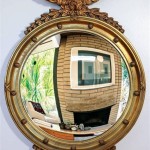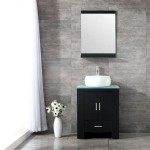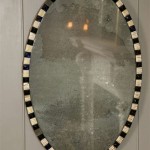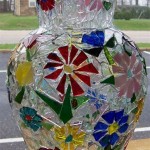Can You Glue Wood to a Mirror?
Attaching wood to a mirror can be a tricky undertaking. The smooth, non-porous surface of a mirror presents adhesion challenges not typically encountered with other materials like wood or metal. Understanding these challenges and selecting the proper adhesive are crucial for a successful and lasting bond.
The primary challenge in gluing wood to a mirror lies in the mirror's reflective backing. This coating, usually composed of silver or aluminum, is extremely smooth and inherently resistant to bonding. Standard wood glues often fail to adhere effectively to this surface, resulting in weak bonds prone to failure. Furthermore, many adhesives contain solvents that can damage the reflective backing, leading to discoloration or distortion of the reflected image.
Choosing the appropriate adhesive is the most critical factor in successfully bonding wood to a mirror. Several options exist, each with its own advantages and disadvantages.
Neutral cure silicone sealants are a popular choice for this application. They offer excellent adhesion to both glass and wood, and their flexibility accommodates the different expansion and contraction rates of these materials, preventing stress fractures. Neutral cure silicones are also generally safe for use with mirrors, as they do not contain the harsh solvents found in some other adhesives. However, silicone sealants typically have a longer curing time than other options.
Specialized mirror adhesives are also available. These formulations are designed specifically for bonding to the reflective backing of mirrors, providing a strong and durable bond. They are often faster curing than silicone sealants and offer excellent clarity, ensuring the adhesive remains invisible. When selecting a mirror adhesive, it's essential to choose one that is specifically marketed as safe for use with mirrors.
Construction adhesives, while generally very strong, are not always suitable for mirror applications. Some construction adhesives contain solvents that can damage the mirror backing. If using a construction adhesive, it's crucial to select a solvent-free, mirror-safe formula. Always test the adhesive on an inconspicuous area of the mirror before applying it to the entire surface.
Double-sided tape, specifically designed for mounting mirrors, can also be a viable option, particularly for lighter wood pieces. This tape offers a quick and easy application and generally does not require extended curing time. However, it may not be suitable for heavier wooden components or applications requiring exceptional strength.
Before applying any adhesive, proper surface preparation is essential for achieving a strong bond. Both the wood and the mirror surface should be clean and dry. Any dust, dirt, or grease can interfere with adhesion. Cleaning the mirror with a glass cleaner and the wood with a mild detergent solution, followed by thorough drying, is recommended.
The application process will vary depending on the chosen adhesive. For liquid adhesives like silicone or mirror adhesive, application with a caulking gun provides a controlled and even bead. Double-sided tape should be applied firmly to the wood, ensuring full contact with the surface. Once the adhesive is applied, the wood should be carefully positioned on the mirror and held in place with clamps or weights until the adhesive fully cures.
The curing time will vary depending on the chosen adhesive and ambient conditions. Always refer to the manufacturer's instructions for the specific curing time of the adhesive being used. Avoid disturbing the bonded pieces during the curing process to ensure a strong and lasting bond.
The weight of the wood is an important consideration when selecting an adhesive. Heavier wood pieces will require a stronger adhesive than lighter ones. For very heavy wooden components, mechanical fasteners, in conjunction with an adhesive, may be necessary to ensure adequate support and prevent the wood from separating from the mirror.
Environmental factors can also play a role in the success of the bond. High humidity or extreme temperatures can affect the curing process and the long-term performance of the adhesive. Ideally, bonding should be carried out in a controlled environment with moderate temperature and humidity.
Safety is paramount when working with adhesives and mirrors. Always wear appropriate safety gear, including gloves and eye protection. Work in a well-ventilated area, especially when using solvent-based adhesives. Dispose of any used adhesive and cleaning materials properly according to local regulations.
While gluing wood to a mirror can be challenging, selecting the right adhesive and employing proper surface preparation techniques can result in a strong and lasting bond. Understanding the properties of different adhesives and the specific requirements of the project will ensure a successful outcome.

4 Easy Steps To Glue Mirror Wood

How To Glue A Mirror Wood Fast Effective Start Woodworking Now

How To Glue Wood A Mirror Surface Hunker

How To Make A Simple Mirror Frame With Wood Upgrade An Old

How To Make A Simple Mirror Frame With Wood Upgrade An Old

How To Glue A Mirror Wood Fast Effective Start Woodworking Now

How To Build A Mirror Frame Diy Ideas Glass Doctor

Real Solution To Gluing Wood Molding A Glass Mirror Rivercliff Cottage Journey

How To Frame A Mirror With Clips Glue The Wall

How To Glue A Heavy Mirror The Wall Mom Blog Society








